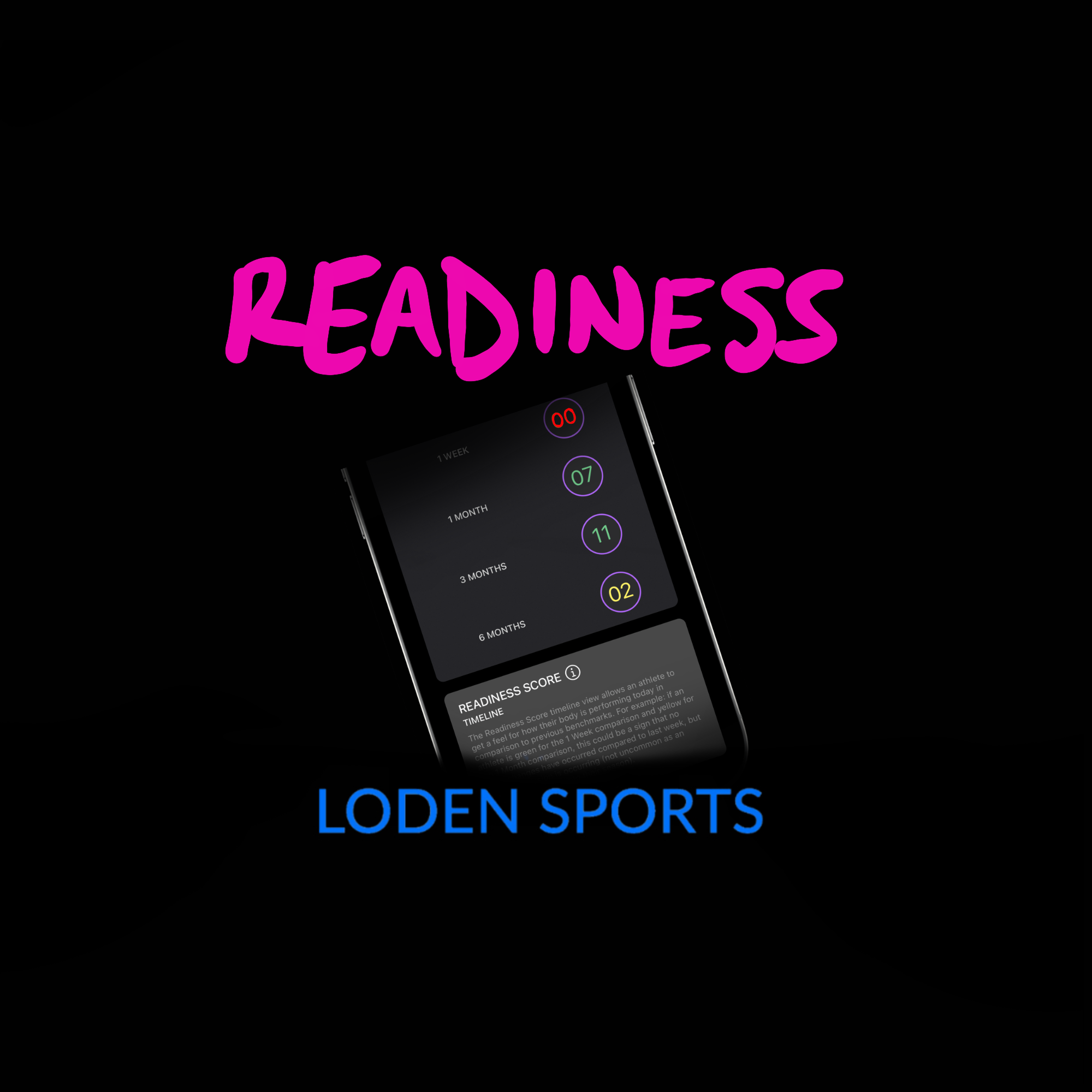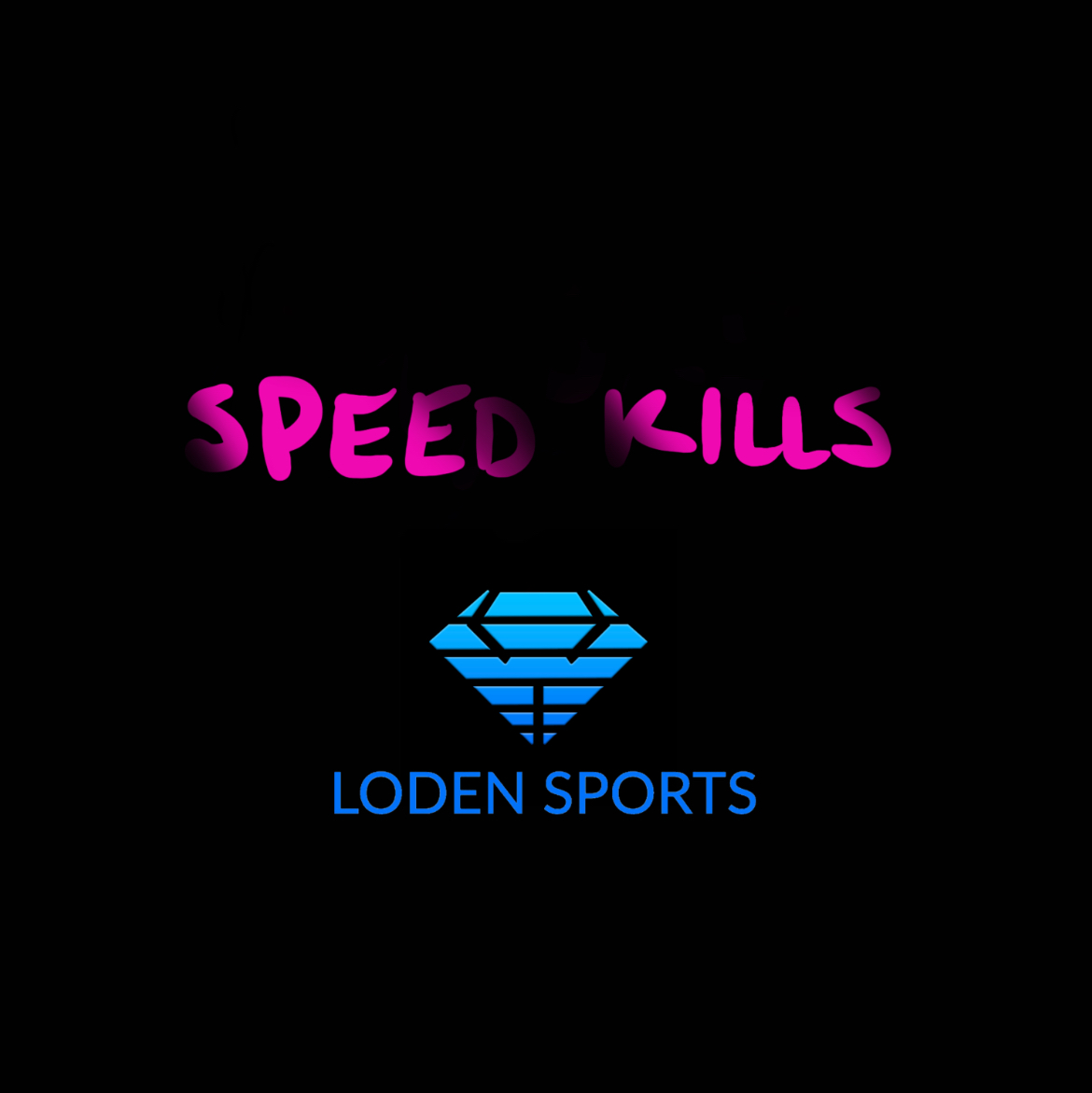
This blog entry is a modified version of a resource from the upcoming Loden Sports LTAD. The Loden Sports LTAD will be an inclusive, holistic, and philosophical reference guide for developing athletes of all sports and levels of aspiration.
Context
Loden Sports has a regimented process for collecting and processing performance data. The Loden Sports team has combined to complete performance evaluations on over 15,000 athletes across 150+ sessions over the past 5 years.
This resource will cover benchmarks and age-norms for metrics that Loden Sports represents in its post-evaluation report to athletes, parents, coaches, and administrators. Benchmarks will appear in the following order:
-
-
- Loden Score System (Loden Score, Power, Quickness, Speed)
- Raw Metrics (Sprint, Jump)
- Lower-Half Symmetry
-
The standard Loden Sports dynamic performance evaluation consists of a 30-yard sprint, a 3 rebound jump assessment, and a single leg jump assessment. Please consider that Loden Sports may have a different process, different set of assessments, and/or different tools to measure than others (see Loden Sports Blog 10: Why Measuring Matters). What is represented in this resource is data collected with a consistent process, battery of assessments, and tools. If there are any questions on the process, assessments, or tools used to measure, Loden Sports can be reached via email info@lodensports.com or via direct message on Twitter: @LodenSports
Loden Sports completed more athletic evaluations in 2021 on male athletes vs. female athletes and for this reason, Loden Sports is only representing male athlete data in this blog. If anyone is interested in discussing what we have observed in the female athlete data set, Loden Sports can be reached via email info@lodensports.com or via direct message on Twitter: @LodenSports
Loden Score System
The Loden Score System is a concise, easy-to-understand series of metrics that provide an overview of the raw athletic profile. In total, each athlete that completes a Loden Sports Dynamic Performance Evaluation receives a Power, Quickness, Speed, and Loden (overall) score. These scores allow athletes, parents, and coaches to track and benchmark physical development.
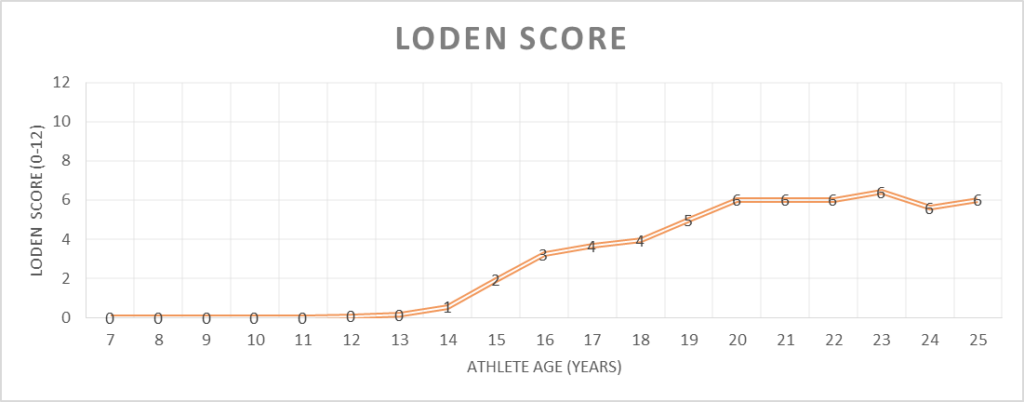
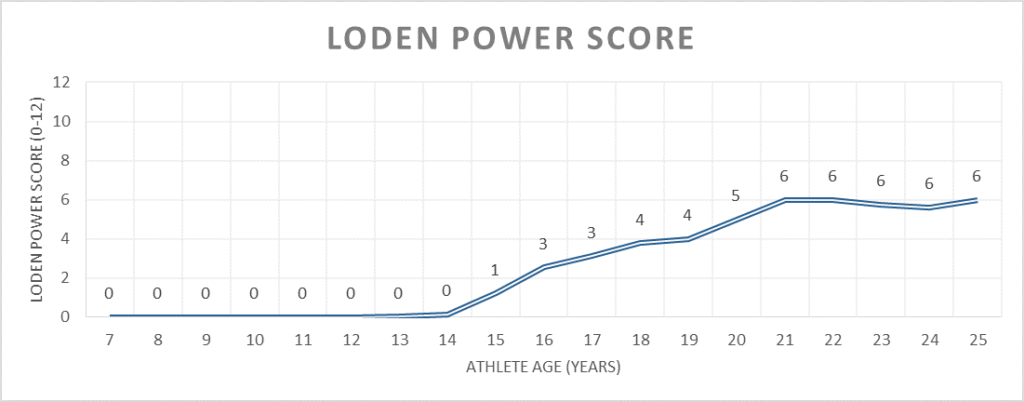
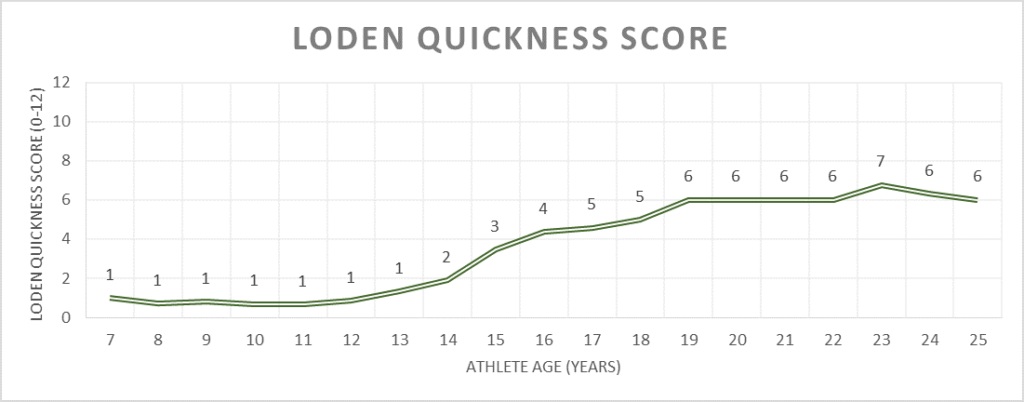
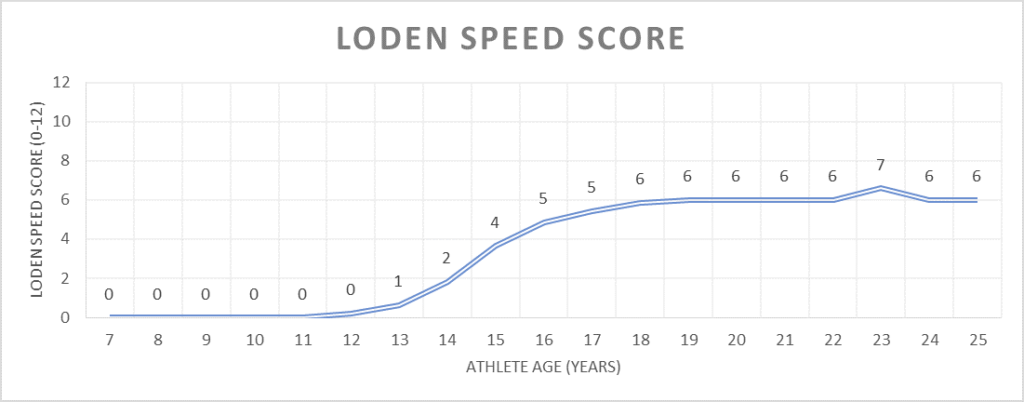
30-yard Sprint

The 30-yard sprint is a measure (in seconds) of the amount of time it takes an athlete to sprint 30-yards starting in an athletic stance at a standstill.
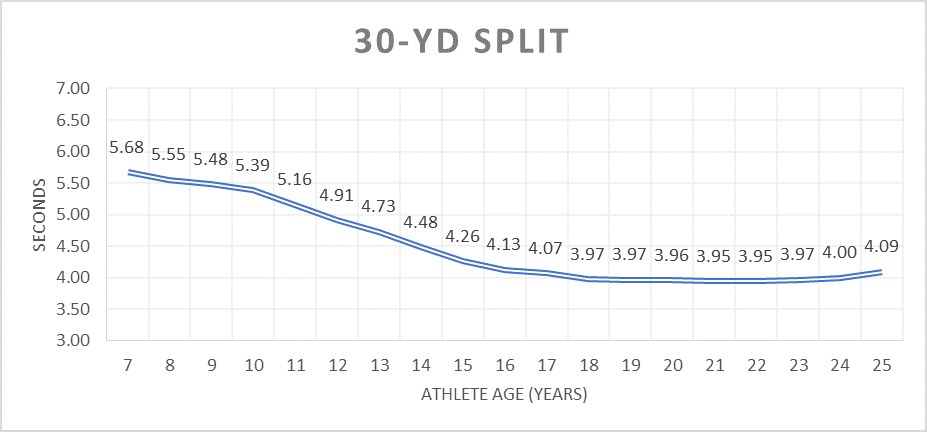
During the 30-yard sprint, Loden Sports also captures a 10-yard split…
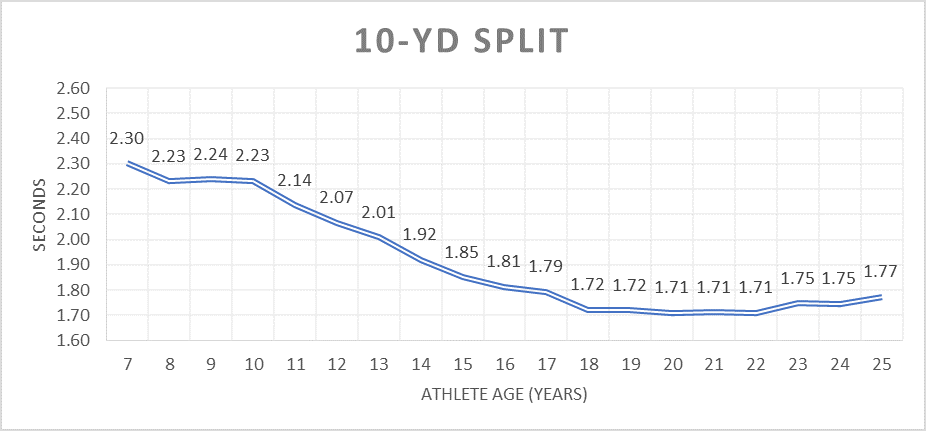
3 Rebound Jump

For the 3 Rebound Jump assessment, Loden Sports tasks the athlete with jumping as high as they can as quick as they can three times. Average 3 Rebound Jump Height is the average height of the three jumps represented in inches.
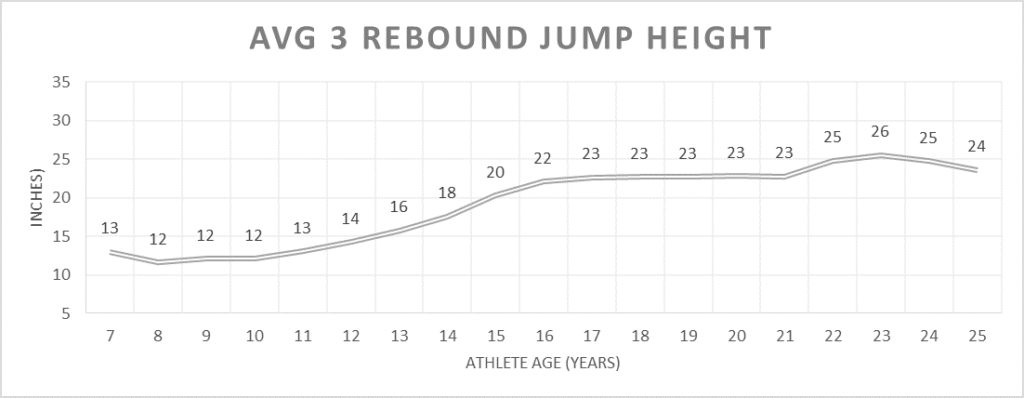
In addition to jump height, Loden Sports also collects and considers how much time the athlete is spending on the ground in between each jump. Loden Sports uses a flight time divided by ground contact time ratio to calculate RSI (reactive strength index).
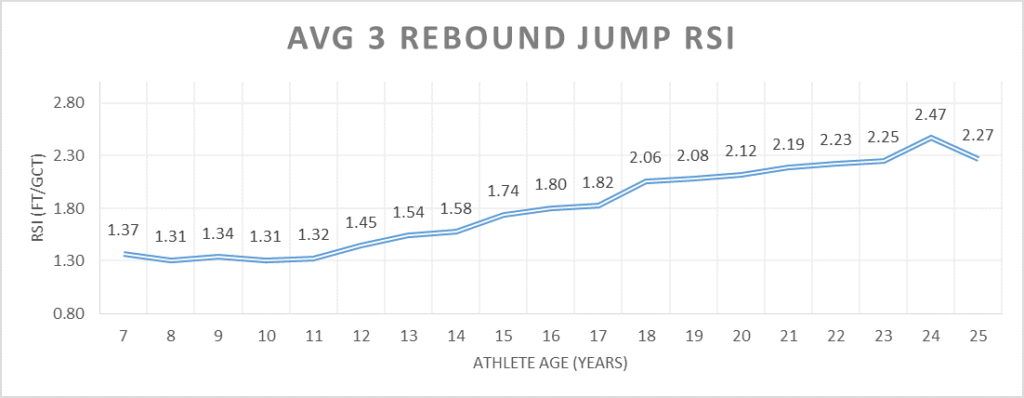
Loden Sports uses “Loden Power Points” to represent the average amount of power produced by the athlete during their three jumps.
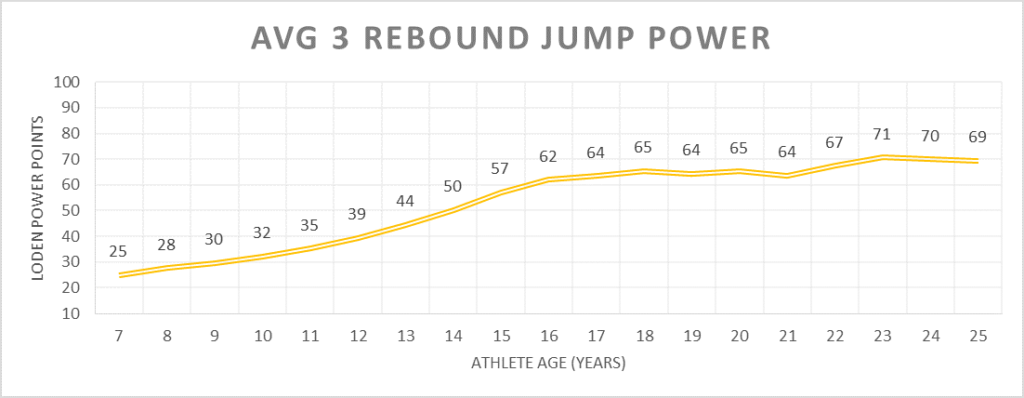
Single Leg Jumps
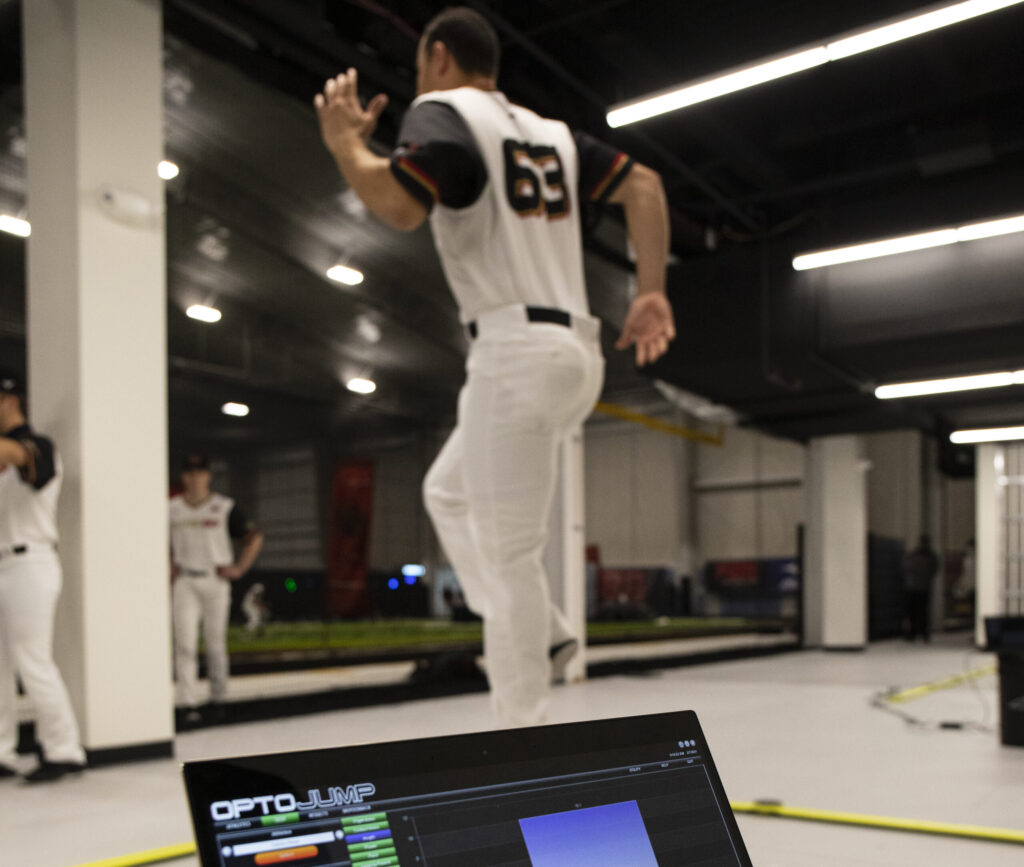
For the single leg jumps assessment, the athlete is tasked with jumping as high as they can as quick as they can, while doing their best to jump in-place, five times. Average Single Leg Height is the average height of the five jumps represented in inches.
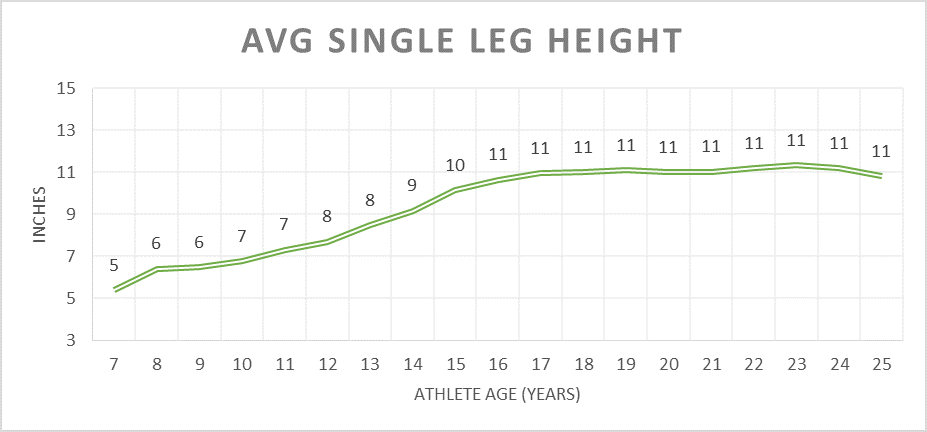
Similar to the CMJ assessment, Loden Sports also collects and considers how much time the athlete is spending on the ground in between each jump during the single leg jumps assessment. Loden Sports uses a flight time divided by ground contact time ratio to calculate RSI (reactive strength index).
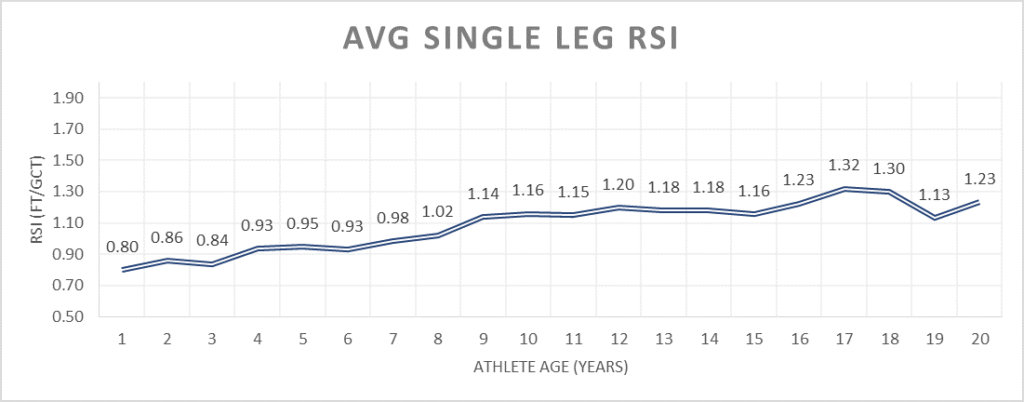
Loden Sports uses the same “Loden Power Points” as the CMJ assessment to represent the average amount of power produced by the athlete during their five, single leg jumps.

Lower-Half Symmetry
In addition to looking at the performance of each leg individually in the single leg jumps assessment, Loden Sports also looks at how the legs perform in relation to each other. Lower-half symmetry can have implications for keeping an athlete healthy and performing at peak.
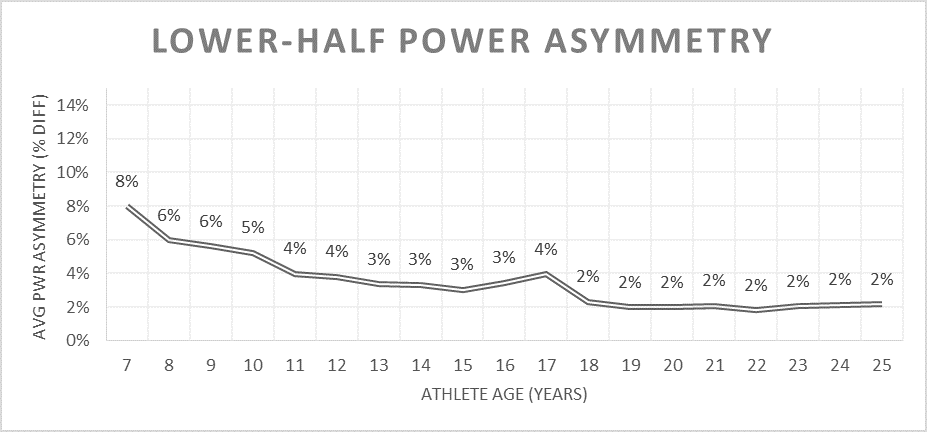
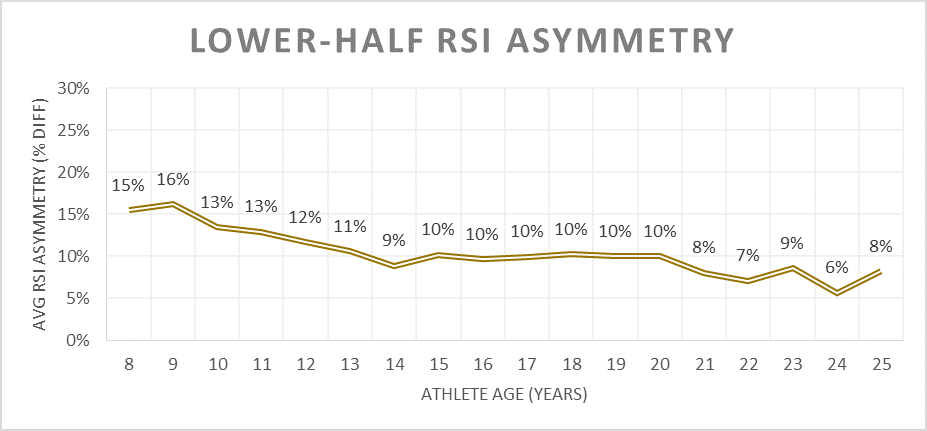
Loden Sports plans to publish updated objective performance benchmarks on a yearly basis.



